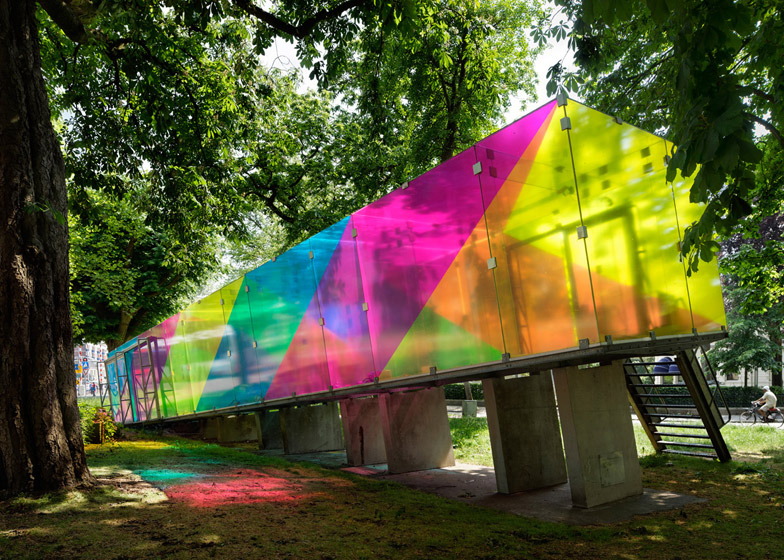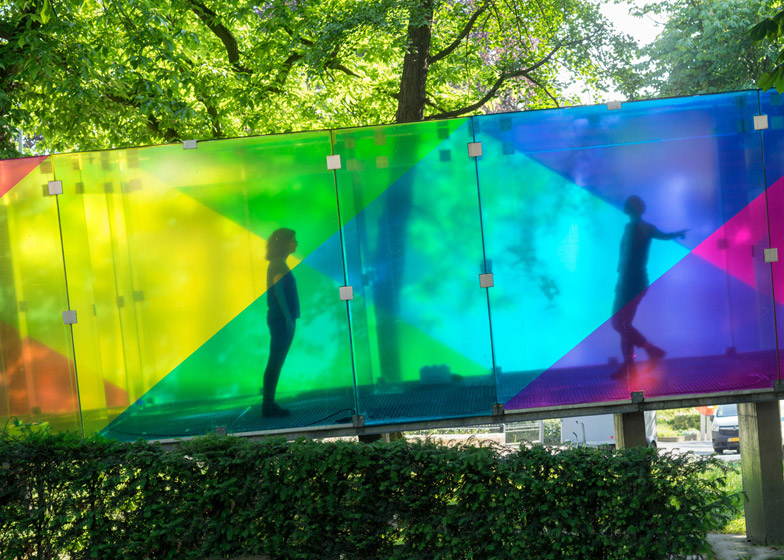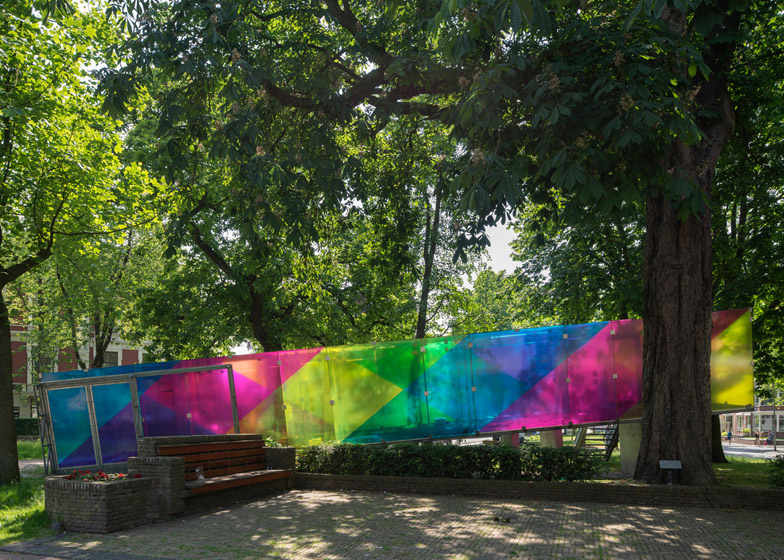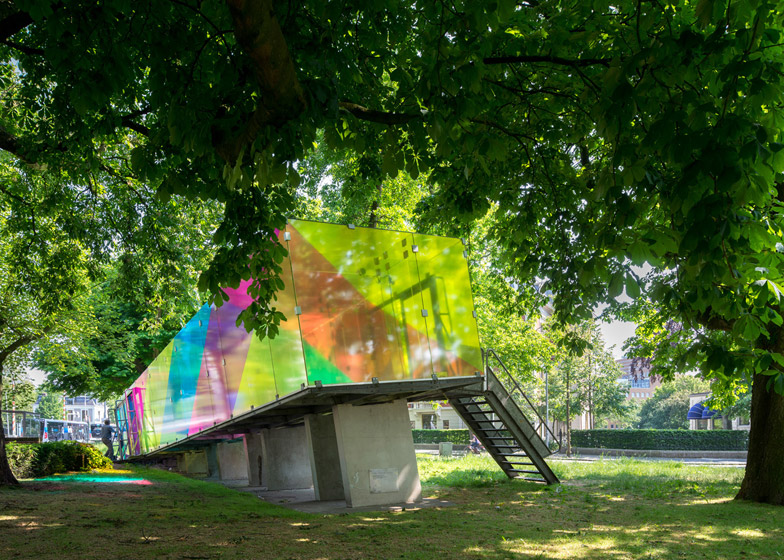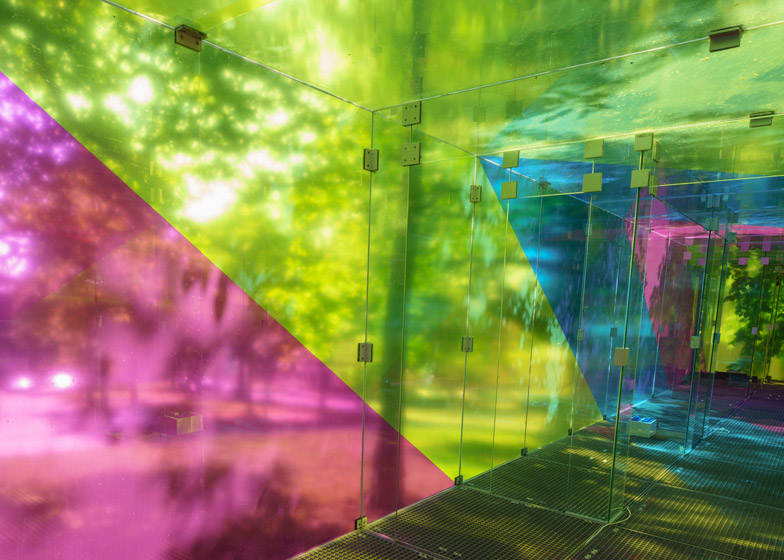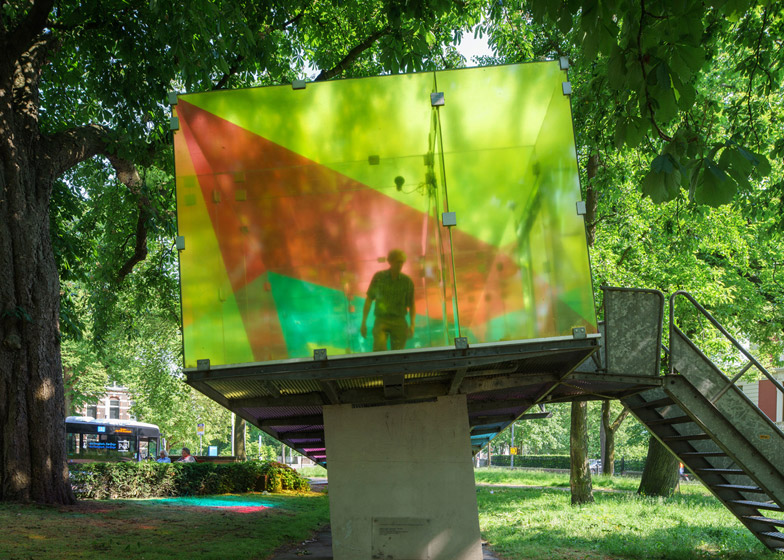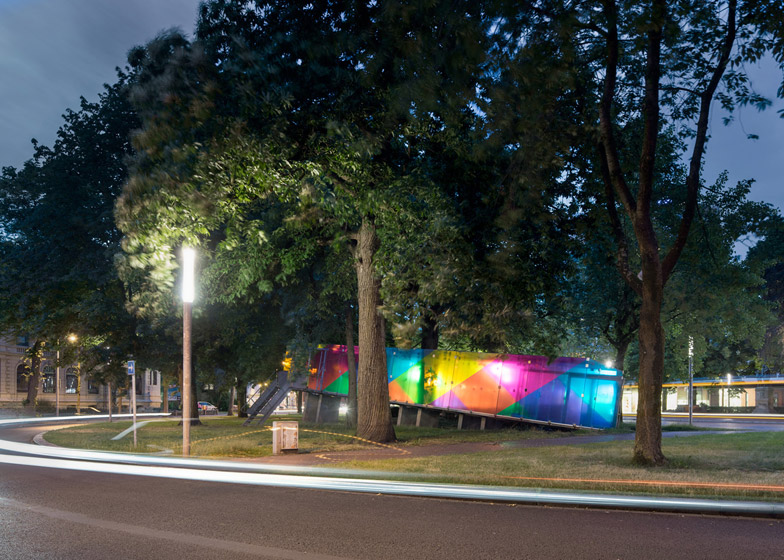Dutch architect Shift has applied translucent cyan, magenta and yellow film to Bernard Tschumi's glass pavilion in Groningen to create a temporary installation of shifting colours (+ slideshow).
The tilting Glass Video Gallery - now known as the Tschumi Pavilion - was completed by French-Swiss architect Bernard Tschumi in 1990 as part of an outdoor exhibition in the north Netherlands city of Groningen.
Twenty-five years later, Rotterdam studio Shift has created an intervention on the glass facade, turning the pavilion into a spectacle of changing colours and patterns.
"We completely wrapped the transparent pavilion in a colour pattern," Shift director Thijs van Bijsterveldt told Dezeen. "The glass walls allow it to become a three-dimensional graphic piece that changes with the viewpoint of the spectator."
Named CMY Pavilion, the installation consists of a pattern made up diagonal bars of cyan, magenta and yellow - the three colours of the subtractive CMY colour model.
Related stories: see more architecture by Shift
As visitors move around the pavilion these colours combine to create a shifting graphic pattern of secondary "virtual colours".
"Cyan and magenta make blue, yellow and cyan make green, and yellow and magenta make red," said van Bijsterveldt, explaining how the virtual colours are generated.
Colours combine to create different effects depending on the position of the viewer. From the roundabout that encircles the pavilion, drivers will see constantly changing colours and patterns.
Related stories: see more architecture by Bernard Tschumi
Depending on the viewpoint, the strips of film create secondary "virtual colours" at the points where they overlap – a technique previously used by Studio Dennis Parren to create a lamp that casts coloured shadows.
People standing square on to the pavilion will see a diagonal pattern while others viewing from an oblique angle will perceive a cross-hatch pattern. People inside the pavilion will not see any patterns at all but will instead see a view of the city tinted in three colours.
Tschumi was one of five architects enlisted by the Groninger Museum at the start of the 1990s to create pavilions suitable for viewing music videos.
Structures by Peter Eisenman, Coop Himmelb(l)au and Zaha Hadid have since been dismantled, while the fifth – by OMA – now functions as a bus stop.
Shift is the first architecture studio to update Tschumi's pavilion, although over 80 artists have created interventions for the structure in the last 25 years.
Related stories: see more about the Groninger Museum
"In the past, interventions were done by different types of artists that mostly used the glass pavilion as an urban vitrine for their work," said Bijsterveldt. "As architects, we were interested in interacting with the pavilion itself."
Shift's installation will remain in place until September 2015.

